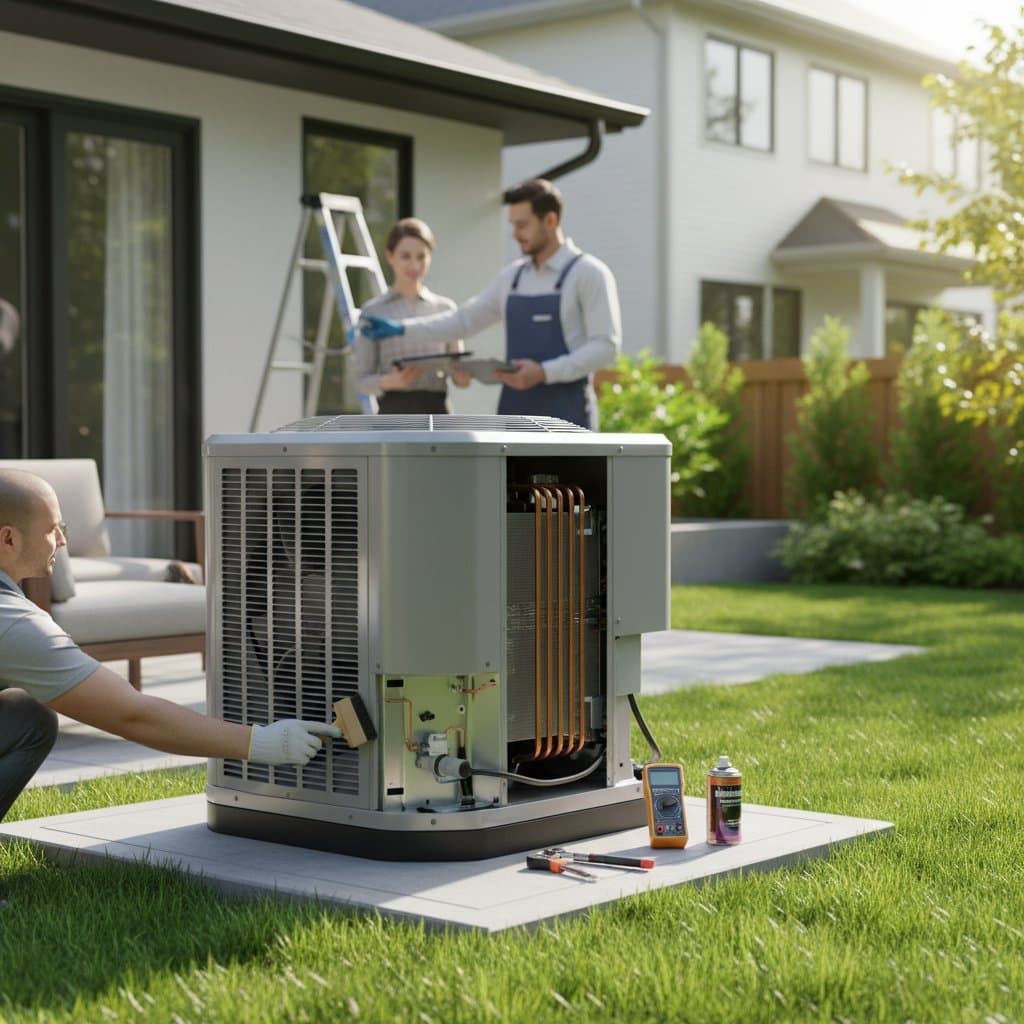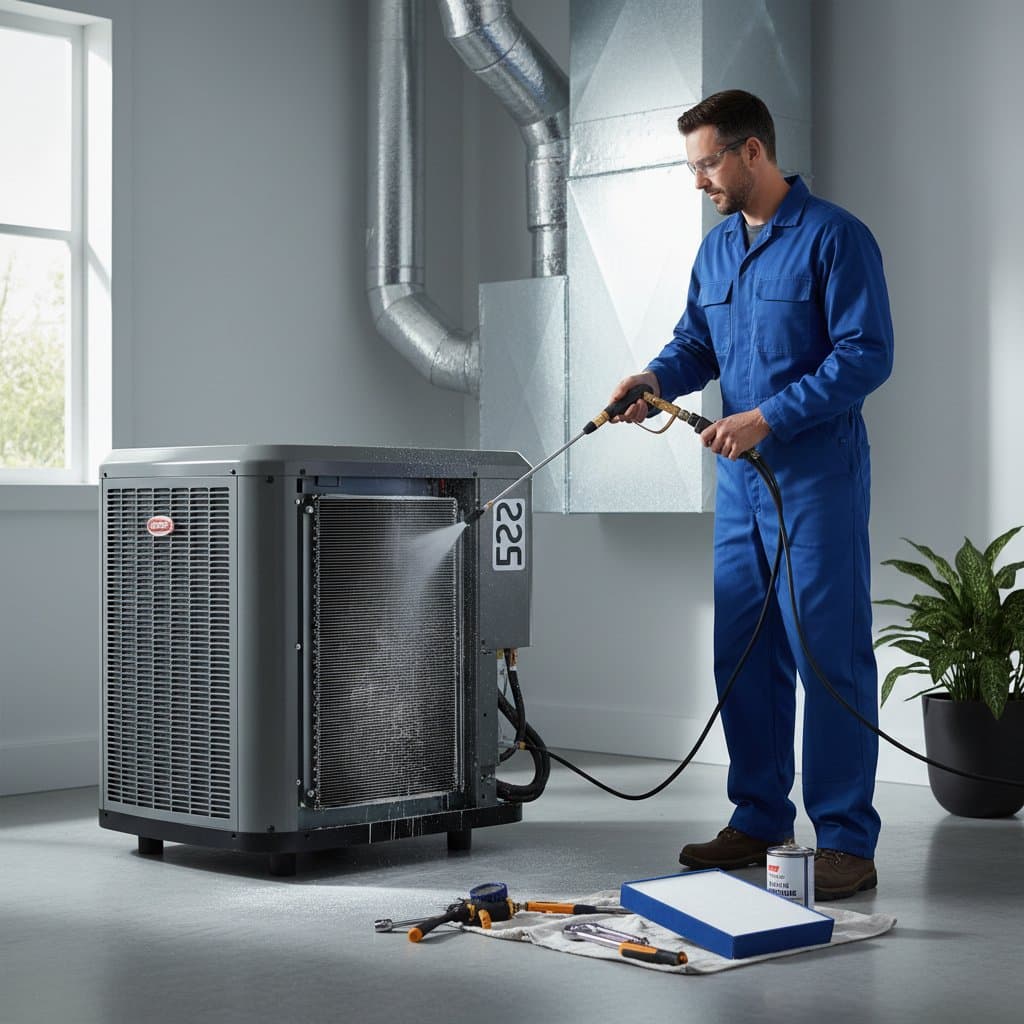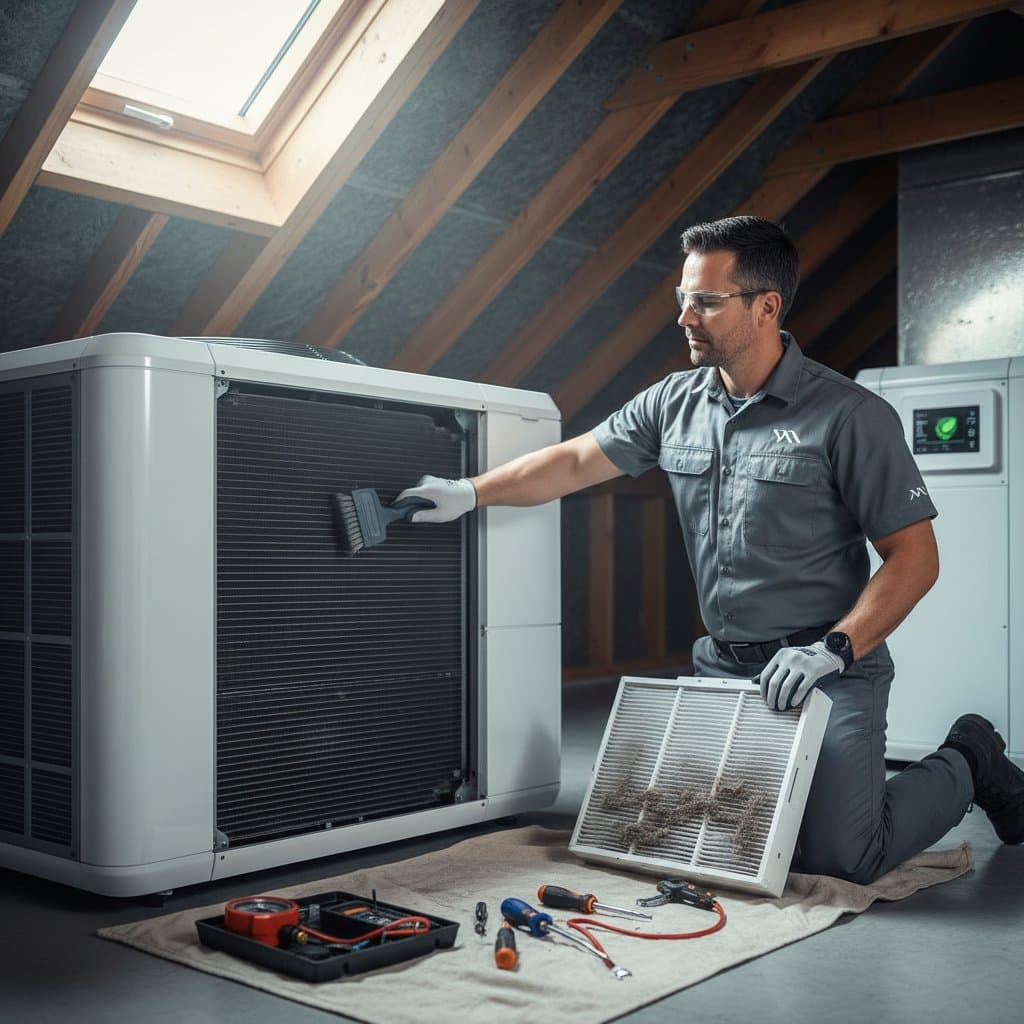Prepare Your AC to Avoid Costly Summer Failures
Summer heat transforms your air conditioner from an optional feature into an essential lifeline. Numerous homeowners address their units only after failure strikes. Proactive maintenance prior to peak temperatures averts major repairs, minimizes energy consumption, and sustains home comfort amid intense warmth. A straightforward seasonal routine distinguishes seamless operation from urgent service during scorching spells.
How Proactive Maintenance Lowers Costs
Idle air conditioners accumulate dust, pollen, and condensation over winter months. These minor accumulations escalate into significant malfunctions when continuous operation begins. HVAC experts on platforms such as Reddit's r/HomeImprovement report that most midseason failures stem from neglected upkeep rather than inherent defects. Early cleaning, examination, and testing alleviate stress on critical components like the compressor and blower motor, both expensive to repair or replace.
Property owners who arrange comprehensive tune-ups before initial heat surges achieve energy savings of up to 20 percent in high-demand periods. Optimized systems achieve rapid cooling, reduce cycling frequency, and hold steady temperatures without excessive effort. Such performance translates to diminished repair needs, extended durability, and reduced utility expenses.
Comprehensive AC Preparation Guide
Effective preparation extends beyond filter replacement. Execute these sequential actions to prime your unit for dependable summer function.
1. Replace or Clean the Air Filter
A dirty filter impedes airflow, compelling the unit to labor excessively. Swap out disposable filters or rinse reusable variants every one to two months amid intensive operation. Select filters with MERV ratings of 8 to 11, which provide optimal particle capture without compromising air circulation. Elevated ratings capture finer debris yet risk overburdening aging equipment.
2. Examine the Outdoor Condenser Unit
The exterior condenser demands unobstructed ventilation. Clear foliage, twigs, and soil from the surrounding area. Maintain a minimum two-foot clearance from vegetation. Employ a gentle brush or vacuum to remove debris from the fins. Correct any deformed fins using a fin comb from local hardware suppliers to restore proper airflow.
3. Clear the Condensate Drain Line
This line expels moisture generated during the cooling process. Blockages from algae or residue cause water accumulation indoors. Flush the line using a vinegar and warm water solution, allow it to dwell, then rinse thoroughly. Attach a wet-dry vacuum to the outlet for stubborn obstructions.
4. Verify Thermostat Precision
Activate the cool setting and observe if the unit attains the target temperature. Excessive cycling or comfort inconsistencies indicate calibration needs. Recalibrate the device or upgrade to a smart thermostat. These intelligent models adapt to daily routines, optimizing energy use for cooling.
5. Assess Ductwork for Air Leaks
Duct imperfections squander chilled air and prolong runtime. Inspect joints and seams for separations or looseness. Apply HVAC-specific foil tape or mastic sealant to secure them. Engage a specialist for thorough duct audits to uncover concealed inefficiencies beyond basic visual checks.
6. Secure Electrical Connections
Frayed wiring invites shorts or diminishes motor performance. Competent homeowners may inspect terminals, but safety dictates professional involvement for most. Technicians deploy multimeters to measure voltage and amperage, confirming safe operational parameters.
7. Apply Lubrication to Mobile Components
Fans, motors, and bearings require periodic oiling to minimize friction and deterioration. Administer manufacturer-specified lubricants in measured amounts. Cease operation upon detecting squeaks or grinds, and resolve promptly to prevent motor lockup or belt rupture.
8. Evaluate Overall System Function
After completing cleanings and checks, operate the unit for a minimum of fifteen minutes. Monitor airflow consistency, uniform cooling, and minimal noise. Identify rattles or shakes as indicators of unsecured elements. Persistent cooling difficulties or warm output necessitate expert assessment.
Distinguishing DIY Tasks from Professional Services
Individuals manage routine duties such as filter swaps, debris removal, and thermostat adjustments. Advanced procedures, including refrigerant evaluation and electrical diagnostics, demand certified HVAC professionals. Expert tune-ups encompass pressure verification, airflow quantification, and refrigerant balancing, all requiring dedicated equipment and expertise.
Data from Energy.gov indicates that annual professional servicing extends unit longevity by as much as ten years. Such interventions detect nascent compressor issues or refrigerant escapes that evade amateur detection. Tune-up fees typically offset through enhanced efficiency and averted emergency interventions.
Financial Strategy for AC Upkeep
Preventive care ranks among the shrewdest investments for cooling preservation. Allocate funds for filters, supplies, and potential visits. Contrast this with compressor or full-system replacement costs, often exceeding thousands of dollars. Numerous providers propose annual contracts featuring inspections, expedited appointments, and component discounts. These arrangements streamline expense management and guarantee regular attention.
Essential Safety Protocols for Preparation
Disconnect power at the circuit breaker before any intervention. Don protective gloves and eyewear when managing solutions or edged surfaces. Refrain from high-pressure washing exterior units, which risks fin and wire damage. Halt activities and summon experts upon suspecting refrigerant emissions or electrical faults.
Indicators Requiring Expert Intervention
- Diminished or heated vent output
- Prominent rattling, humming, or scraping sounds
- Water accumulation beside the indoor evaporator
- Repeated on-off cycles or uneven temperatures
- Elevated utility statements without usage changes
Specialists pinpoint causes ranging from refrigerant deficits and coil obstructions to component degradation. Timely resolution thwarts total collapse amid summer peaks.
Safeguard Your Cooling System Long-Term
Routine preparation secures both ease and economy. Maintained units endure longer, operate silently, and deliver superior efficiency. Adhering to spring protocols minimizes breakdown risks and provides steadfast summer relief. Document all maintenance, track filter intervals, and book evaluations ahead of rising mercury.
Blend personal efforts with expert support to conquer seasonal demands. View upkeep as a strategic asset, yielding prolonged, trustworthy service from your air conditioner.





